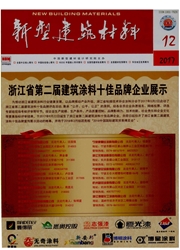

 中文摘要:
中文摘要:
围护结构作为住宅建筑的重要组成部分,其保温隔热性能对于建筑能耗有着重大影响。通过对康定藏族传统民居建筑的广泛调研和分析,对不同围护结构进行了改造,提出了12种围护结构优化方案,比较分析了不同方案的节能效果,并探究了围护结构的最优方案。结果表明:康定传统民居围护结构传热系数较小,建筑采暖耗热量较大;建筑采暖耗热量与传热系数呈线性关系且外墙对其影响较大;外墙、屋面聚苯板的厚度分别为80 mm和50 mm,外窗空气层厚度为8 mm时,建筑围护结构达到最优。
 英文摘要:
英文摘要:
The envelope as an important part of residential buildings, its insulation performance has a significant impact on building energy consumption. The different envelope is modified based on the extensive research and analysis of the Tibetan traditional residence in Kangding. Twelve envelope optimization programs are proposed, comparing and analyzing the energy-saving effect. The results show that the heat transfer coefficient of Kangding traditional residential building envelope is small, and building heating energy consumption is large. Building heating energy consumption has the linear relation with heat transfer coefficient, and facades have a greater impact on heating energy consumption. When the thicknesses of facades, roof polystyrene board are eighty millimeters and fifty millimeters, and the air layer thickness of outer window is eight millimeters, building envelope achieves an optimization.
 同期刊论文项目
同期刊论文项目
 同项目期刊论文
同项目期刊论文
 期刊信息
期刊信息
